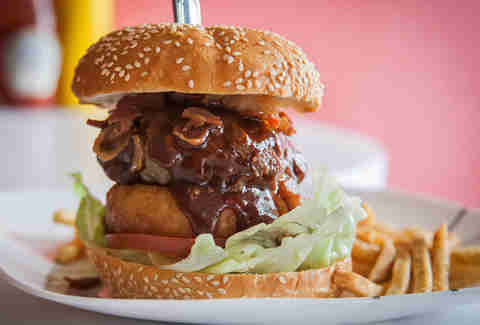

Some milk alternatives can be a great source of calcium, which can be challenging to get for dairy-free eaters.
#Almond and cashew protein milk free
(Just remember that if a product is free of gums, you need to shake the bottle well before drinking, as the ingredients will separate.) Although these ingredients are considered safe, they can be difficult to digest-and that can cause a lot of discomfort if you have compromised gut health, says Functional Medicine Registered Dietitian Brigid Titgemeier. However, some research links carrageenan to gastrointestinal inflammation, which may lead to inflammatory bowel diseases (IBDs) or trigger flare-ups for those who have an IBD.Īdditionally, if you have a lot of GI symptoms, you may find that milk alternatives made without gums (such as gellan gum or locust bean gum) sit best with your system. Carrageenan: Some brands add this extract from red seaweed to thicken and stabilize plant-based milks.

Vanilla and chocolate flavors tend to be the worst culprits. Sugar: Different brands and flavors of non-dairy milk contain varying amounts of sweetener-sometimes more than 4 teaspoons of added sugars per serving.To turn the paste into a milk-like beverage, manufacturers add water, and sometimes other ingredients, such as sweeteners, vitamins, minerals, oils, salt, flavorings, and other substances that stabilize the mixture or give it consistency. It’s then ground into a paste and any particles (from things like the outer shell on oats-the bran-or almond skins) are filtered out so the final product will be smooth. Most of these milks are made in a similar manner: The nut, seed, or legume is soaked. Some people prefer to cut back or eliminate their consumption of animal products like dairy for reasons such as animal welfare or the environmental impact: The combined emissions from the world’s 13 largest dairy businesses grew by 11% between 20.Too much sebum can clog pores, resulting in pimples. Other research suggests that consuming dairy increases levels of the hormone insulin-like growth factor 1 (IGF-1), in turn increasing the production of sebum (a.k.a. One theory is that dairy can trigger inflammation in the body, which can lead to nasal congestion. Other people experience undesirable side effects when they consume the dairy proteins, including congestion and acne.Cutting dairy from their diet is an easy way to eliminate this sometimes painful situation. About 36% of Americans have lactose malabsorption, which can cause lactose intolerance and an upset GI system if they consume anything containing lactose.

But research is conflicted about what effect this ultimately has on metabolic health.

Some people choose to eat dairy, but there are various reasons to avoid it altogether or at least minimize intake: Whether you’re all-in on alternatives or you simply want to switch up your milk here and there, the variety of options offers something for everyone-but some are much better than others when it comes to metabolic health. Made from nuts, seeds, and grains, these beverages are taking off: In 2020, Americans bought 20% more plant-based milks than they did in 2019. Yes, milk can be an easy source of protein and calcium, but at the same time, some people can’t tolerate dairy, and others avoid it for other health or ethical reasons.Įnter milk alternatives. But with sales steadily declining in the last two decades, it’s clear not everyone agrees. In the 1980s, commercials claimed that milk does a body good.


 0 kommentar(er)
0 kommentar(er)
